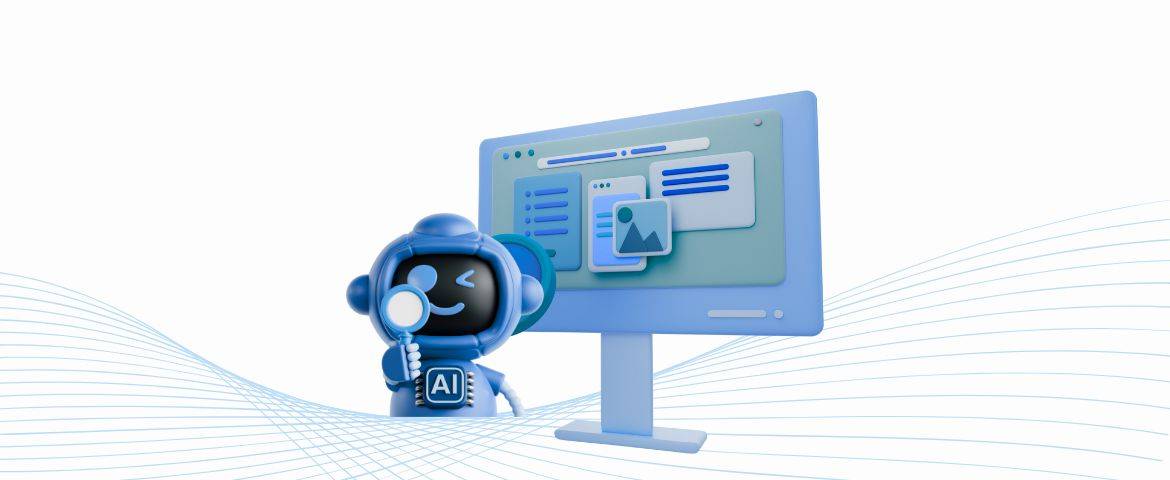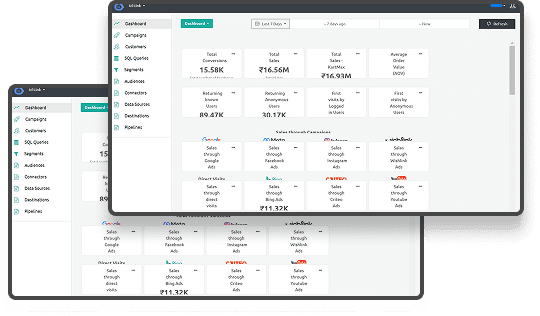Exploring Future Trends in Data Collection and AI Automation
Are you ready to rethink how customer data drives your marketing?
A recent survey found that over 66% of U.S. adults feel uneasy when advertisers access their first-party data. At the same time, roughly 20 U.S. states now enforce varying consent rules that affect targeted advertising and profiling. These shifts together redefine how you must collect, manage, and act on customer data, not through outdated tracking, but through methods that respect privacy and still deliver real results.
TL;DR
- The future of data collection is driven by AI automation, privacy laws, and real-time intelligence, focusing on privacy-first and compliant strategies.
- Server-side tracking and first-party data are replacing traditional third-party cookies, ensuring more accurate and secure data collection.
- AI-powered automation optimizes data processing and personalization, allowing businesses to act faster and with greater precision.
- Privacy regulations like GDPR and CCPA are reshaping how companies handle customer data, making transparency and consent crucial for effective marketing.
What Is Data Collection?
Modern data collection begins with capturing meaningful user interactions across websites, mobile apps, and digital touchpoints. These interactions help you understand customer behavior, campaign impact, and the effectiveness of your overall digital strategy.
Accurate data empowers you to make informed decisions while respecting privacy mandates and compliance frameworks. With privacy-first systems and real-time visibility, you ensure the future of data collection remains secure, insightful, and actionable.
Looking ahead, let's consider how data collection methods have evolved over time and how privacy standards are shaping new approaches.
Ways to Collect Data: Traditional vs. Modern Approaches
Data collection methods have evolved as privacy standards, user expectations, and marketing goals continue to shift. Here are the key differences between traditional and modern data collection approaches:
| Aspect | Traditional | Modern |
| Data Source | Third-party cookies, forms | First-party data, server-side tracking |
| Privacy Compliance | Higher risk of non-compliance | Privacy-first and regulation-ready |
| Data Accuracy | Delayed, often incomplete | Real-time, enriched, behavior-aware |
| Ownership | Controlled by ad platforms | Fully owned and centralized |
| Integration | Siloed, complex setup | Plug-and-play with CDPs and analytics tools |
Next, we’ll dive into the practical ways you can collect data in today’s environment, focusing on strategies that prioritize security and compliance.
Also Read: Understanding the Process, Tools, and Types of Data Ingestion
How to Collect Data Effectively?
With privacy regulations tightening and browser restrictions increasing, your data strategies must evolve to remain scalable and compliant. You need tools that capture meaningful signals across platforms without depending on outdated or intrusive methods.
Here are structured ways you can collect data more effectively in today’s privacy-first environment:
- Utilize server-side tracking to securely capture user interactions, thereby reducing data loss resulting from browser restrictions or ad blockers. This approach, similar to Ingest IQ's server-side tracking, enhances privacy while improving website performance.
- Centralize first-party data in a compliant platform to unify customer activity across your website, app, and CRM systems.
- Integrate event-based analytics that record specific user actions, offering deeper behavioral insights without using third-party cookies.
- Connect data to CDPs for real-time audience segmentation and more precise campaign targeting across multiple marketing channels.
- Ensure consent mechanisms are present on all properties, with logs that align to GDPR, CCPA, and other legal requirements.
- Limit reliance on third-party data by capturing insights directly from users via forms, surveys, and authenticated sessions.
From here, we’ll see how a well-organized data strategy can drive business growth and contribute to better decision-making across the board.
Benefits of Effective Data Collection
Effective data collection does more than fill dashboards; it powers decisions, increases ROI, and safeguards your organization against privacy risks. You build trust and performance simultaneously by grounding every strategy in clean, reliable data.
Here’s how you benefit from a well-structured data collection strategy:
- Boost campaign accuracy with direct, consented data that reflects real customer intent and journey paths across your ecosystem.
- Reduce attribution gaps by aligning offline and online interactions through unified identifiers and server-side tracking methods.
- Ensure long-term compliance by eliminating gray-area data practices and staying transparent about what you collect and why.
- Enhance customer experiences through relevant touchpoints driven by insights gathered from first-party data interactions in real time.
- Increase profitability by using quality signals to lower ad waste, retarget high-value users, and refine acquisition strategies.
Let’s move ahead and discuss the key trends driving the future of data collection and how they are reshaping the industry.
Key Trends in Data Collection & Automation
As the future of data collection shifts toward automation and intelligence, staying ahead means rethinking both infrastructure and intent. Privacy regulations, consumer expectations, and competitive pressure are reshaping how you collect, process, and act on data.
1. Real-Time Data Enrichment & Orchestration
Capturing and acting on customer signals in real time drives performance across campaigns, sales funnels, and retention journeys.
- Streaming platforms like Kafka and Kinesis deliver immediate access to behavioral data across apps, websites, and third-party tools.
- AI-powered enrichment layers enhance raw data with attributes that boost personalization, segmentation, and predictive campaign outcomes.
- Orchestration platforms automate responses across systems, creating event-driven pipelines that reduce manual decision-making delays.
2. Edge AI & AIoT (AI + IoT)
Edge computing changes where and how data is processed, enabling faster action closer to the data source.
- Smart sensors and IoT devices now embed AI models, offering near-zero latency in response-critical applications.
- Localized AI decisions reduce dependency on central servers and increase data privacy by limiting data transfers.
3. Autonomous Data Constructs & Pipeline Automation
The future of data collection is increasingly self-managed, with intelligent systems reducing the burden of manual maintenance.
- Autonomous data pipelines detect anomalies, enforce quality rules, and optimize performance with minimal team oversight.
- Metadata-driven platforms catalog assets automatically, ensuring better governance, discoverability, and compliance alignment.
- Data Mesh and DataOps adoption encourage ownership at the team level, enabling agility without bottlenecks.
4. Hyperautomation & Generative AI Integration
Hyperautomation blends RPA, AI, and no-code tools to streamline every layer of your digital data operations.
- Workflow automation tools combine with AI to remove friction across onboarding, reporting, and marketing personalization flows.
- Generative AI agents analyze, act on, and even optimize data workflows, reducing the need for constant human involvement.
- Multi-agent systems orchestrate tasks across databases, analytics tools, and campaign platforms without constant supervision.
5. Privacy-Enhancing Technologies & Synthetic Data
Protecting user trust requires balancing data utility with privacy, and new technologies make that trade-off smarter and scalable.
- PETs like homomorphic encryption and data clean rooms allow data collaboration without exposing sensitive information.
- Synthetic data training models simulate real-world interactions while removing identifiable user traits, preserving compliance integrity.
- Privacy-first architectures align with evolving GDPR, CCPA, and regional frameworks to future-proof your analytics stack.
6. Augmented Analytics & Data Democratization
As data becomes more central to operations, breaking down access barriers ensures faster, more aligned decision-making.
- Voice-activated and NLP tools allow teams to query data using natural language and receive instant visual insights.
- ML-powered insight generation detects trends, outliers, and correlations without requiring statistical expertise or deep tooling knowledge.
- Self-service analytics platforms empower marketers, analysts, and product teams to act without waiting on BI or engineering.
For teams looking to automate and enrich their data collection workflows in compliance with privacy standards, Ingest Labs provides real-time server-side event orchestration and integrated AI-powered data enrichment.
As we wrap up, we’ll delve into how shifting ethical and regulatory landscapes are impacting cookieless advertising and what this means for businesses in the near future.
Also read: Server-Side Tagging: Why It’s Time to Shift the Game
Ethical and Regulatory Shifts Shaping Cookieless Advertising Solutions
As privacy expectations rise, your data strategy must evolve with both ethical and regulatory demands. Businesses like yours now face growing scrutiny around how data is collected, processed, and used across marketing platforms. Below are two interconnected forces that should guide your strategy going forward.
1. Ethical and Security Considerations
You must consider how data is handled at every step, from collection, enrichment, storage, and activation, especially without third-party cookies. Ethical frameworks are now central to your brand reputation and customer trust. Transparency in data sourcing, consent, and retention matters more than ever.
Security also plays a critical role. You should adopt solutions that limit exposure, reduce reliance on client-side identifiers, and secure all data layers. Tools that support server-side tracking, PETs, and synthetic datasets help you uphold privacy while keeping your analytics meaningful.
Ingest Labs provides privacy-first tracking through Ingest IQ and server-side solutions, ensuring secure and compliant data management while eliminating the need for third-party cookies.
2. Impact of Regulatory and Policy Changes
Shifting regulations like GDPR, CCPA, and the U.S. ADPPA are actively redefining what’s allowed in your digital marketing workflows. These policies don’t just affect data capture; they shape how your teams can analyze, segment, and retarget customers in real time.
You need systems that support first-party data strategies and remove dependence on outdated cookie-based methods that won't scale in 2025. Cookieless advertising solutions now require built-in compliance workflows, real-time consent updates, and flexible policy configurations across tools and platforms.
With Ingest Labs' products like Ingest ID, Event IQ, and Ingest IQ, you can ensure compliance with global regulations, support first-party data strategies, and operate in a cookieless environment with privacy-focused, real-time solutions.
Finally, we’ll take a look at how AI-driven automation is transforming the way businesses manage and act on data, paving the way for smarter, more efficient marketing strategies.
Intelligent Automation Redefining the Future of Data Collection
AI automation is no longer a backend advantage; it now drives how you collect, process, and act on data in real time. With cookieless tracking and shrinking user visibility, you need systems that go beyond capturing signals to interpreting them autonomously. This shift allows your team to focus on growth while your tech stack handles complexity behind the scenes.
1. AI-Powered Signal Capture and Normalization
Automated systems can now identify signal gaps and patch missing data using predictive AI models trained on historical context. Rather than losing insights due to blocked scripts or anonymized identifiers, you can recover trends from partial or indirect data streams.
2. Workflow Automation Across Data Pipelines
You no longer need manual orchestration across CDPs, analytics dashboards, and engagement platforms. AI agents now handle syncs, alerts, and cleanup tasks. These agents maintain schema consistency, trigger real-time enrichments, and adapt routing based on behavioral cues or regulatory flags.
3. Generative AI in Customer Data Interpretation
Generative models are transforming how insights are generated, especially across high-volume e-commerce and media campaign datasets. These systems summarize behavioral paths, identify outliers, and suggest experiments or optimizations with minimal analyst input.
For organizations looking to leverage intelligent automation for privacy-first, AI-driven data orchestration, try Ingest IQ within Ingest Labs. Simply enable server-side tracking and real-time enrichment through the Tag Manager.
Final Thoughts
The future of data collection is moving fast, driven by privacy laws, AI automation, and the growing need for real-time intelligence. To stay ahead, you must rethink how your data is gathered, processed, and activated across platforms without compromising on ethics or compliance. Adopting forward-looking, AI-powered solutions isn’t optional anymore, it’s what enables long-term competitiveness in digital-first industries.
Ingest Labs simplifies this shift with Ingest IQ, Ingest ID, and Event IQ, a complete suite built for accurate tracking, customer intelligence, and ethical data handling. These tools support everything from consent management and personalization to server-side tracking and analytics.
Whether optimizing conversions, reducing cart abandonment, or unifying data for smarter targeting, Ingest Labs gives you the infrastructure to execute privacy-first, insight-driven marketing at scale.
Ready to explore how first-party data and server-side tracking can reshape your cookieless advertising strategy? Book a demo with Ingest Labs today.
FAQ
1. What is the future of data collection in marketing?
Data collection is shifting toward server-side tracking, AI automation, and privacy-first tools to meet growing compliance demands.
2. How does AI automation improve data collection?
AI enables faster, more accurate insights by processing large datasets in real time and reducing manual tagging or segmentation.
3. What role do privacy laws play in future data strategies?
Laws like GDPR and CCPA require transparent, consent-based data practices, making a compliant data infrastructure essential for growth.
4. Why is server-side tracking gaining popularity?
It bypasses browser restrictions, ensures more accurate data, and supports privacy mandates across web and mobile environments.
5. How can businesses prepare for a cookieless future?
By adopting first-party identifiers, ethical tracking tools, and platforms like Ingest Labs that support compliant customer data strategies.






